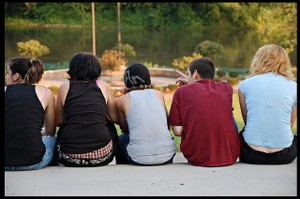Want to keep your kids happy and healthy through the teen years? Then keep a close eye on things during those dangerous hours between 3 and 6.
Once children reach middle school age and are at last old and responsible enough to be left for a few hours after school unsurprised – they are also, unfortunately, old enough to start getting themselves in trouble; and research shows pretty clearly that kids who are left to their own devices for the majority of the after school period are a whole lot more likely to get into trouble with drugs and alcohol and other negative behaviors.
Not convinced? Take a look at some research findings which illustrate the dangers of the after school period:
A study of youth in 17 school districts in Ohio shows that teens who participate in after school extracurricular activities are far less likely to use drug or alcohol than teens who do not participate 1
A Southern California study of almost 4000 middle school students found that those who were left unsupervised during the after school hours are far more likely than those who had supervision to use drug or alcohol, experience depression and do poorly in school.2
A study on American middle school kids found that eighth graders who spent 11 or more hours unsupervised each afternoon were twice as likely to use drugs or alcohol as kids who were more supervised.3
A major US Dept. Of Health and Human Services study found that even a few hours of adult supervised leisure time per week makes a huge difference. Students who spent no time in supervised after school activities were 40% more likely to use drugs or alcohol than teens that spent just 4 hours a week in supervised after school activities. Students who engaged in no supervised after school activities were also 57% more likely to drop out prior to finishing high school.4
You can’t always be there to watch them, but kids left on their own after school tend to get into trouble. If you can’t be there, encourage healthy developmental activities like music, clubs or sports for the after school hours.
- References
-
- 1. Jenkins JE, "The Influence of Peer Affiliation and Student Activities on Adolescent Drug Involvement," Adolescence 122:297-306, 1996.
- 2. Richardson JL, Radziszewska B, Dent CW, Flay BR, "Relationship between After-school Care of Adolescents and Substance Use, Risk Taking, Depressed Mood, and Academic Achievement." Pediatrics 92 (1): 146-148, 1993.
-
- 3. J.L. Richardson et al., "Substance Use among Eighth-Grade Students Who Take Care of Themselves After School," Pediatrics 84 (3): 556-566, 1989.
- 4. U.S.Department of Health and Human Services, Adolescent Time Use, Risky Behavior, and Outcomes: An Analysis of National Data. Washington, D.C.: US DHHS, 1995.
Page last updated Jun 22, 2011


